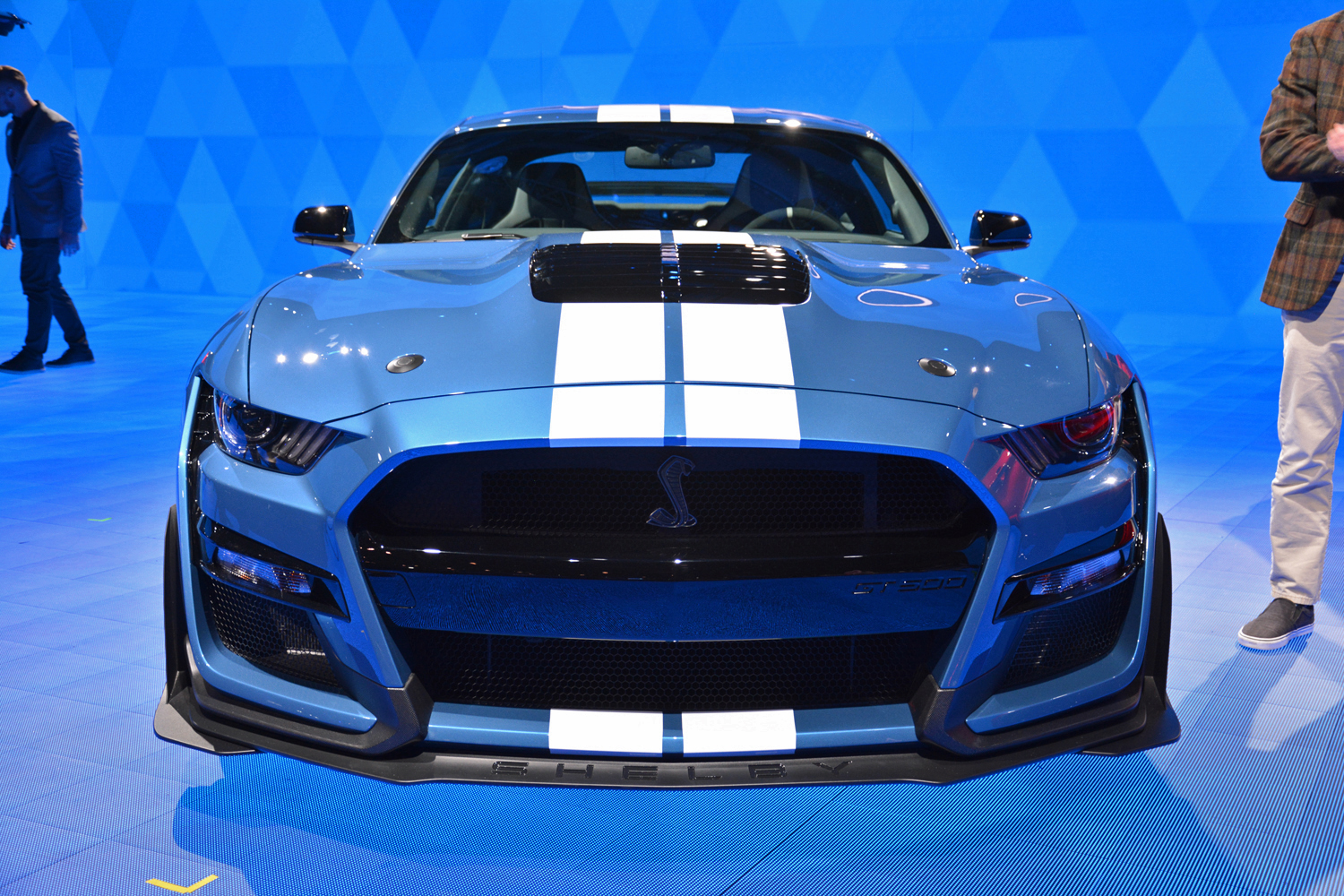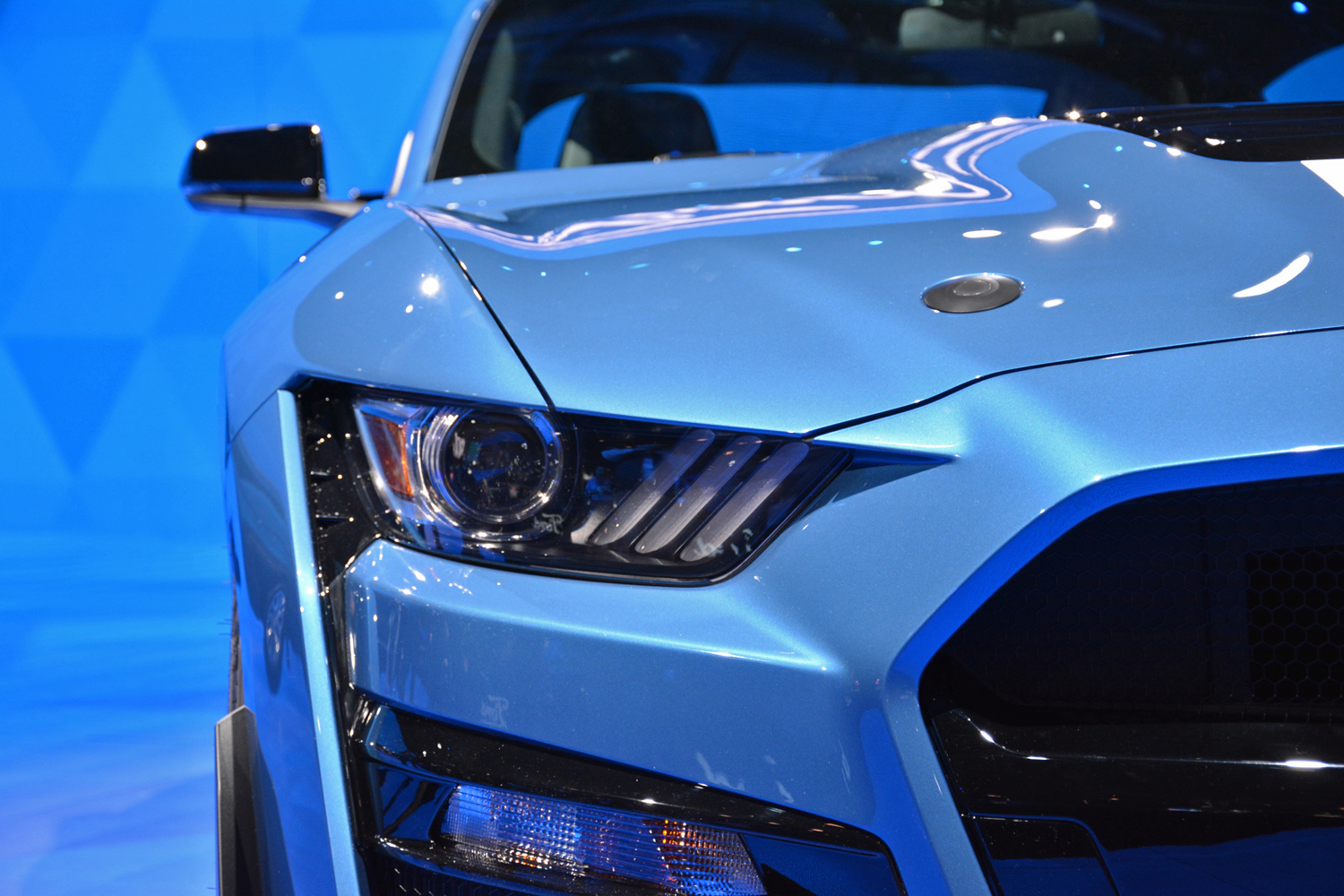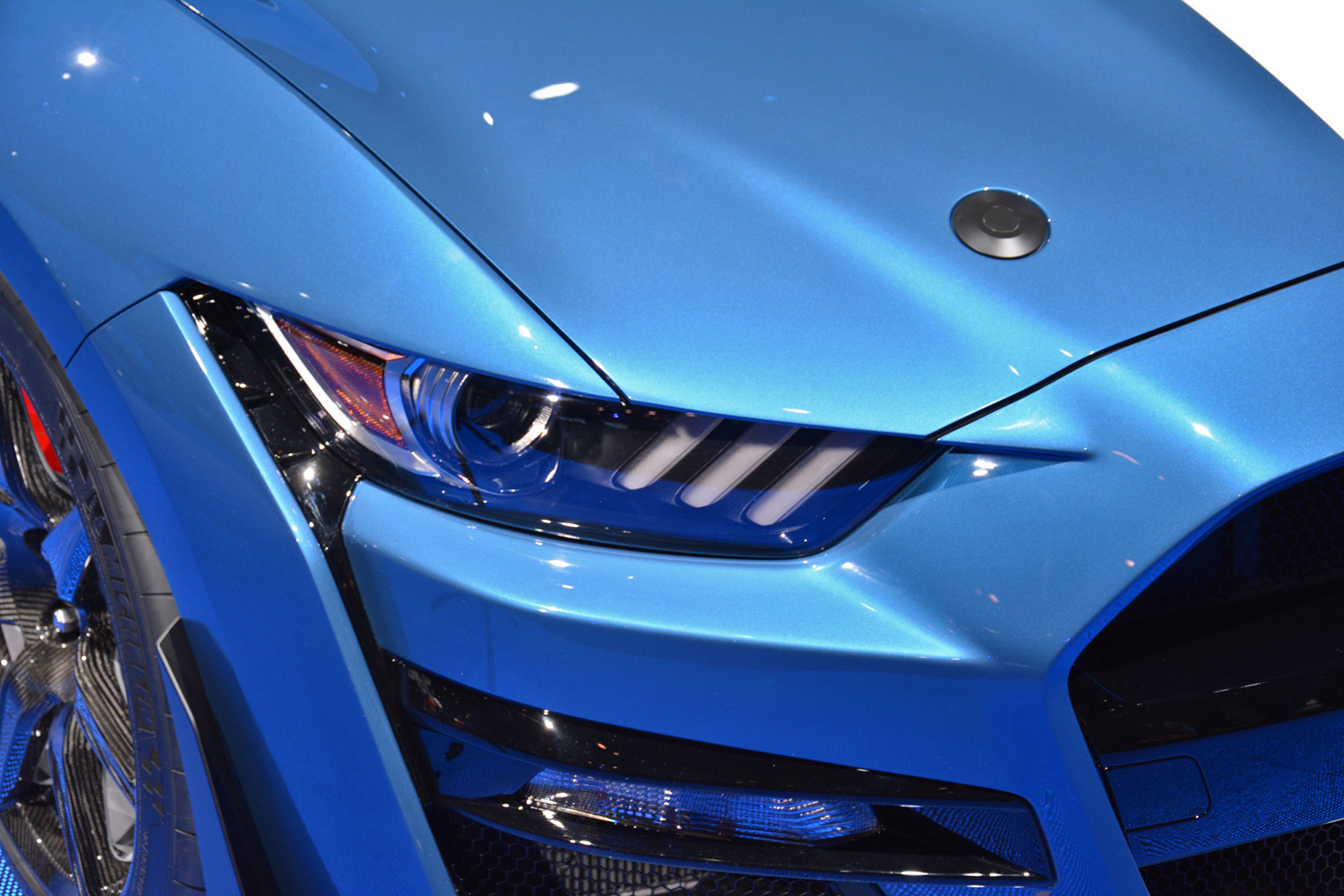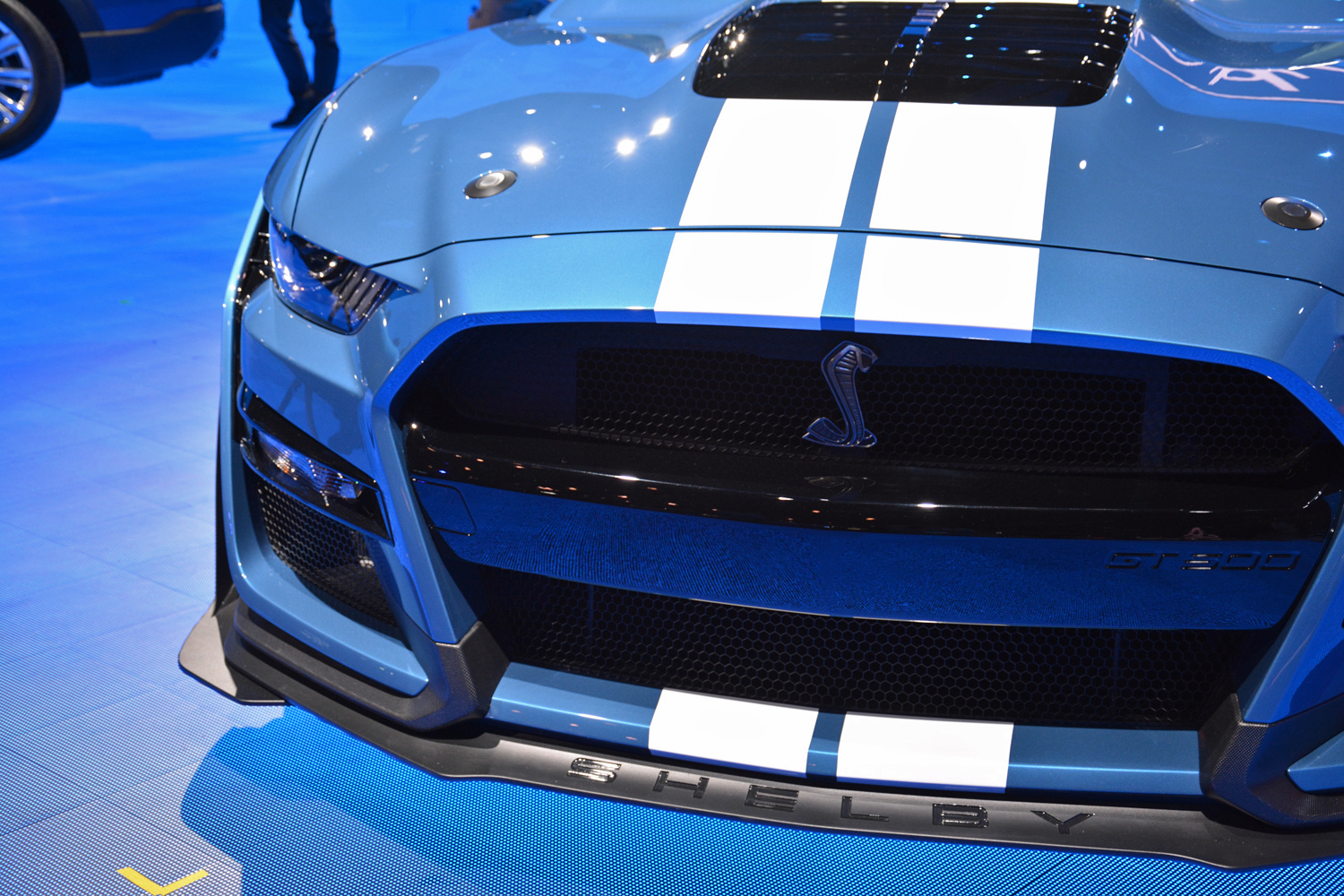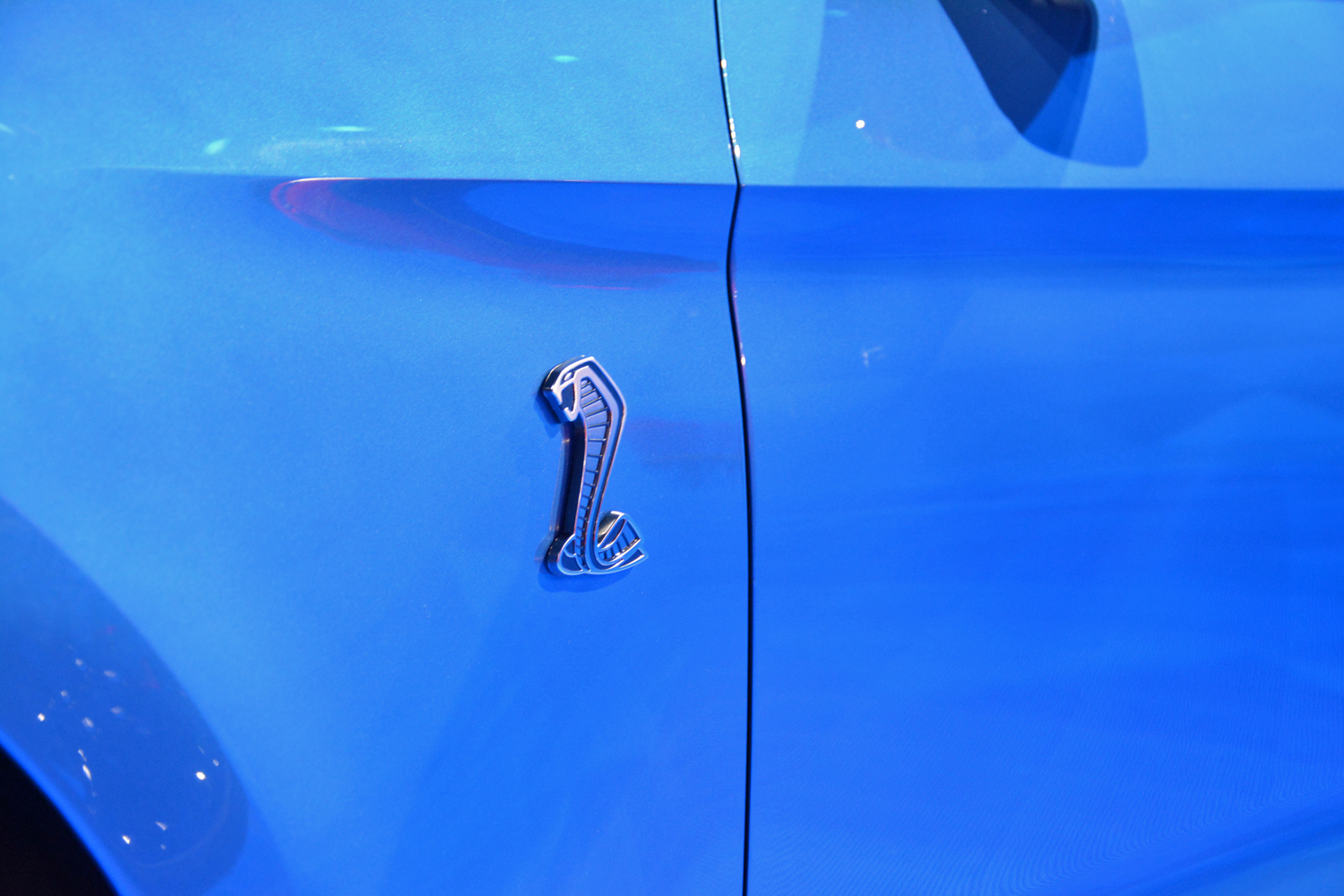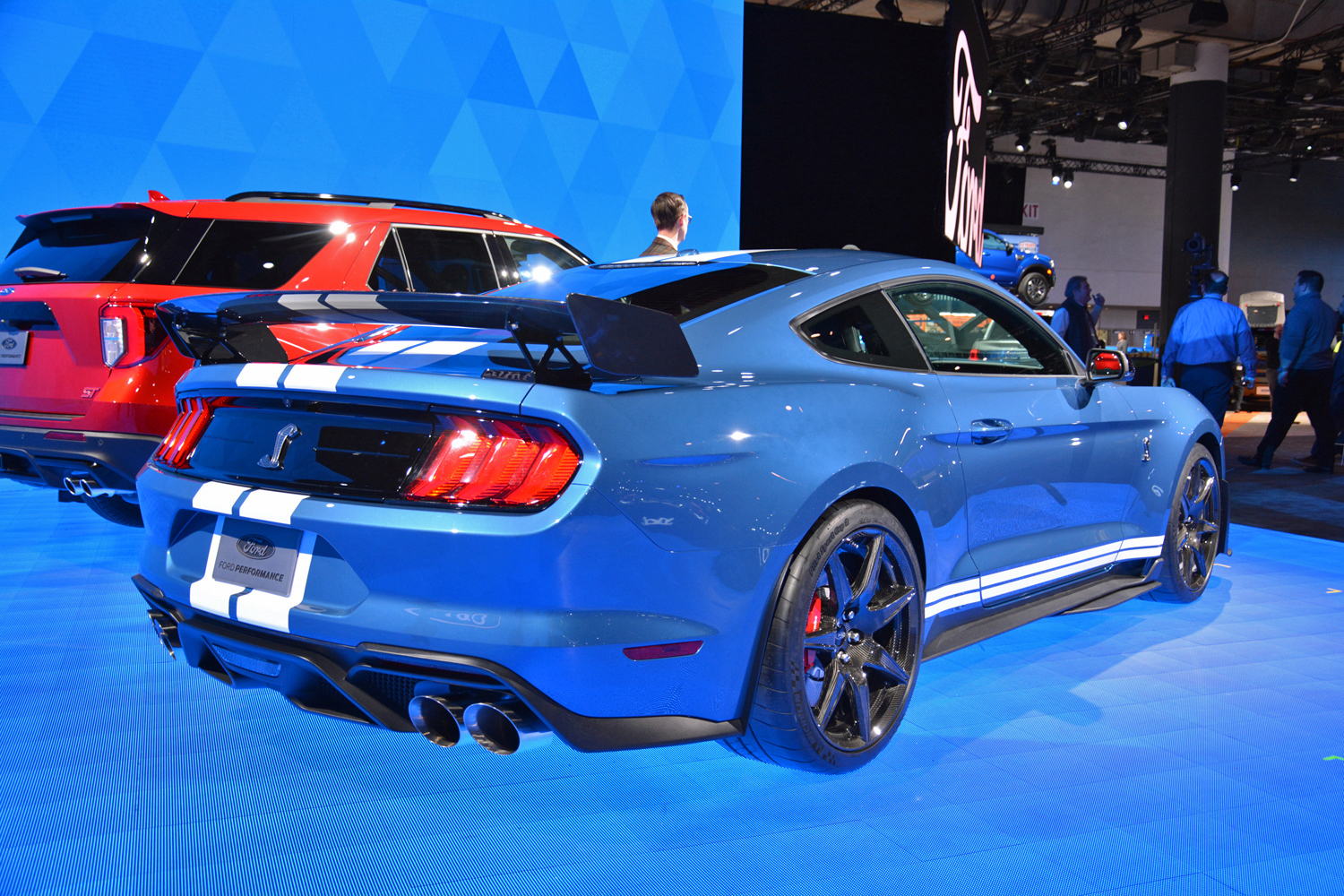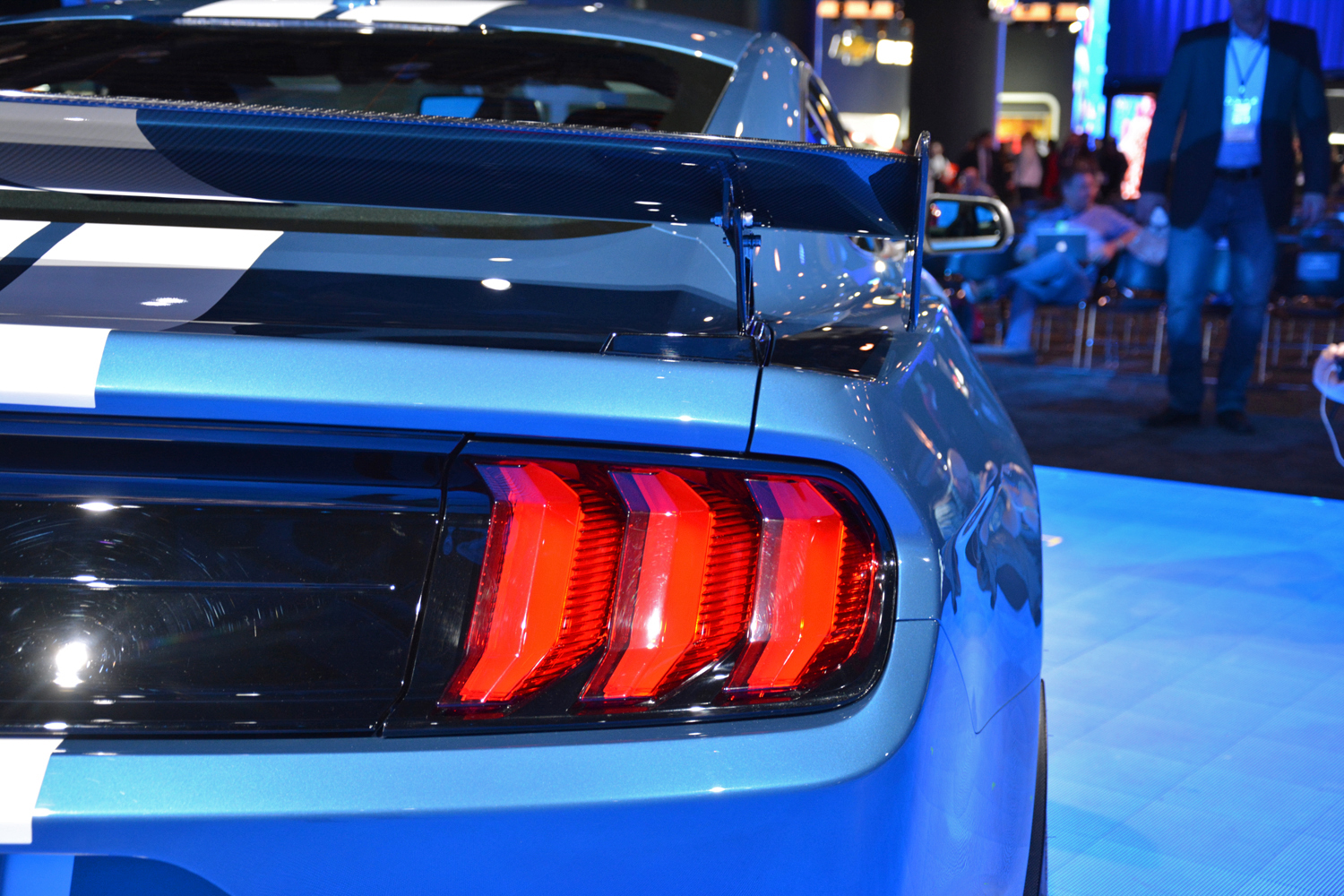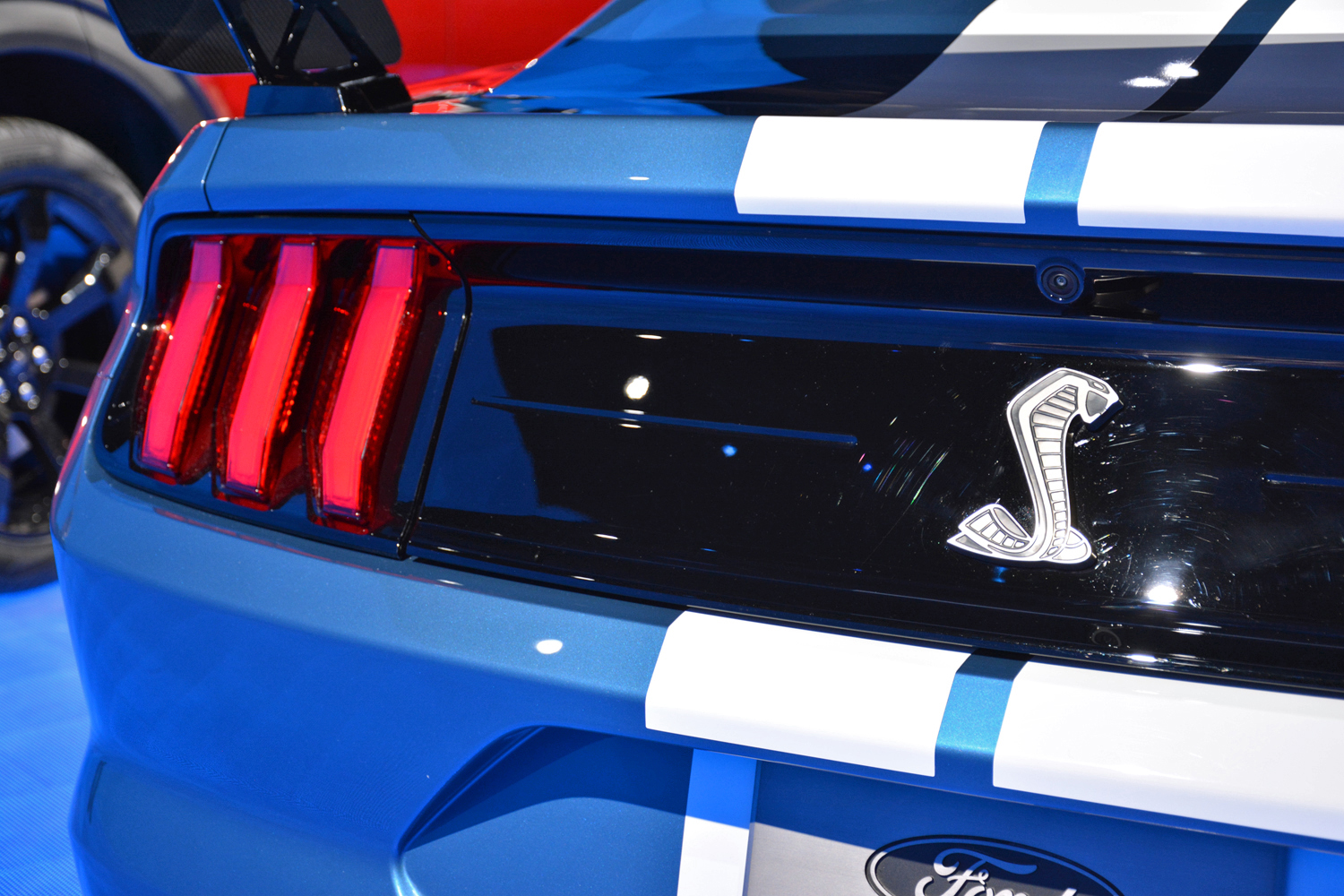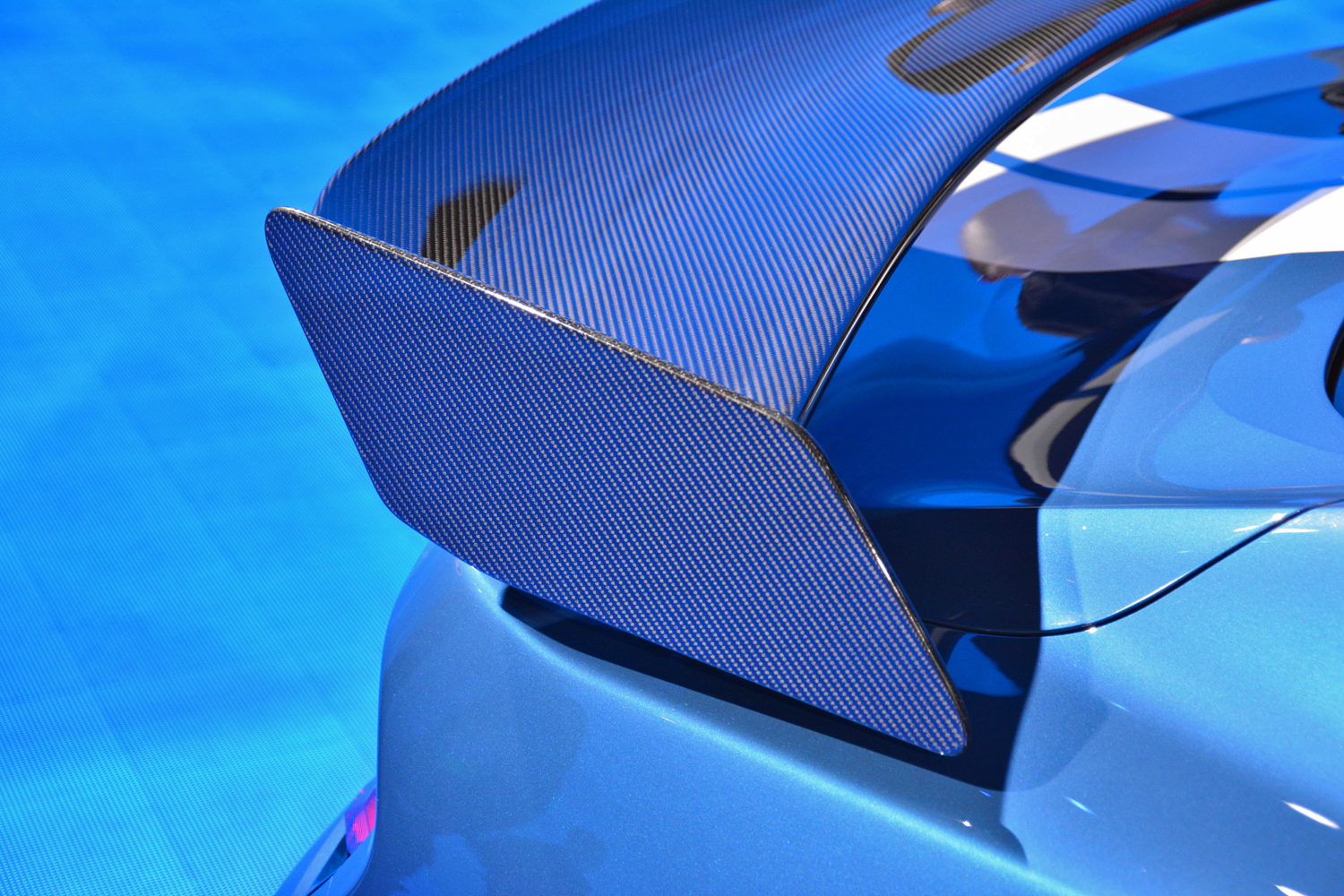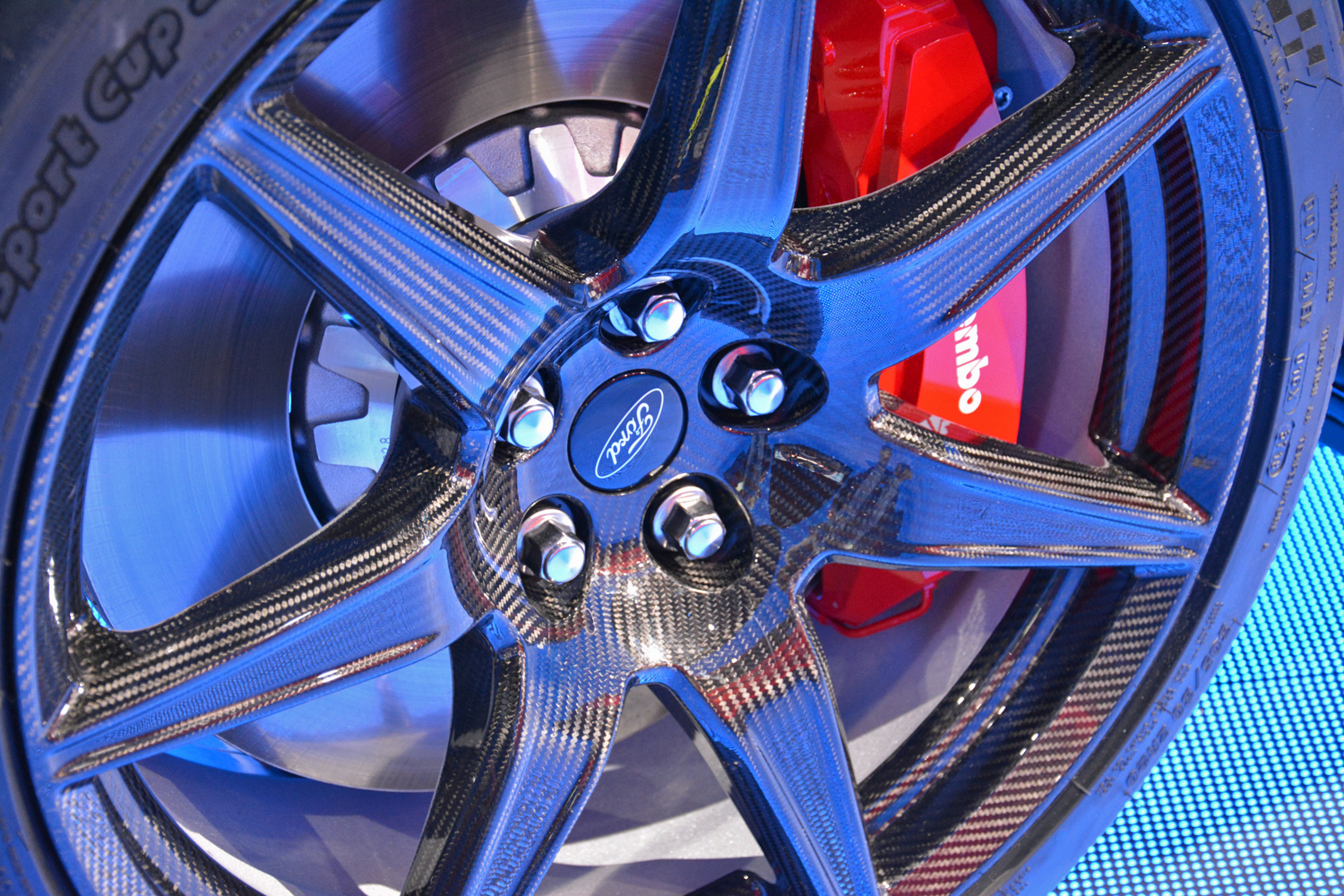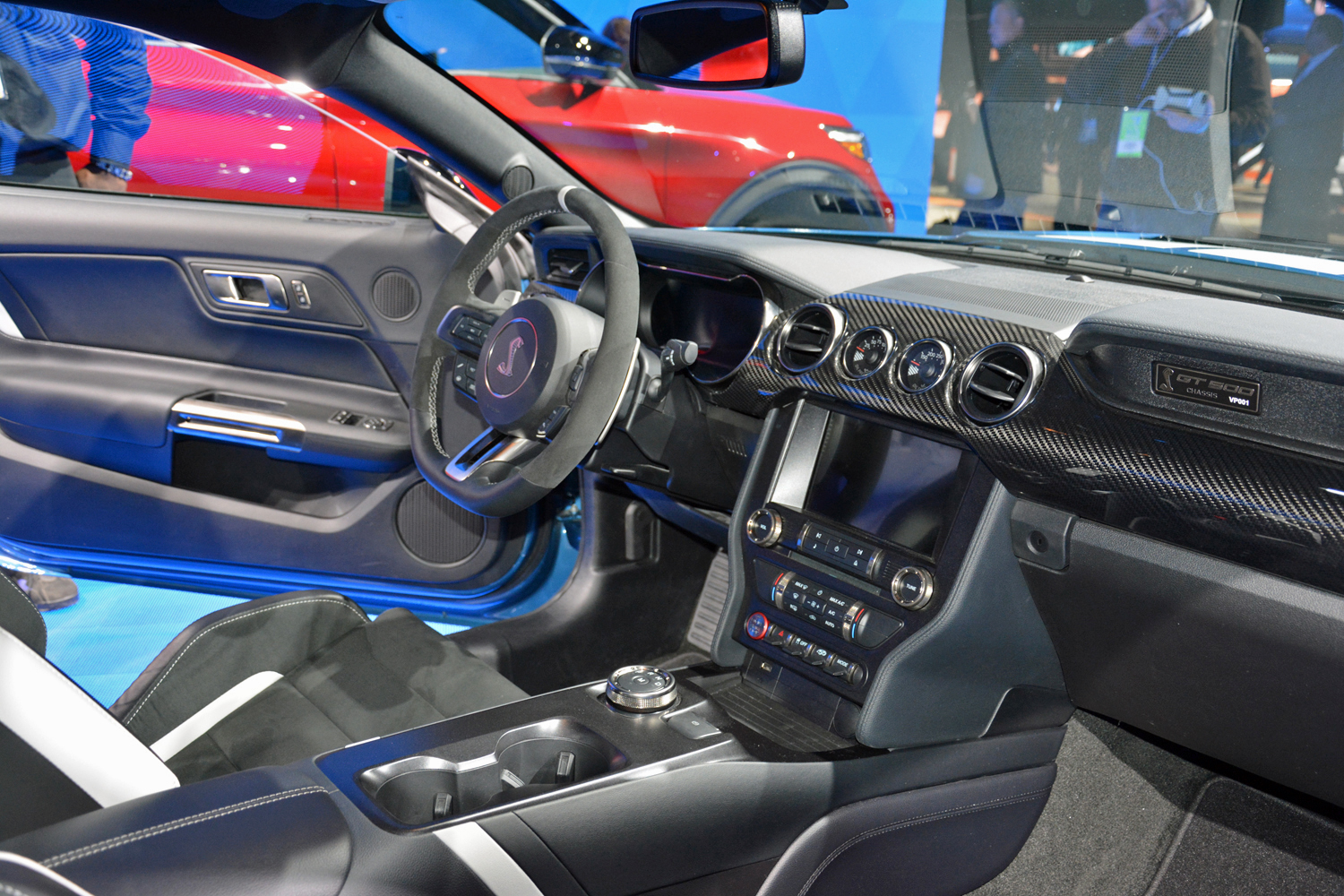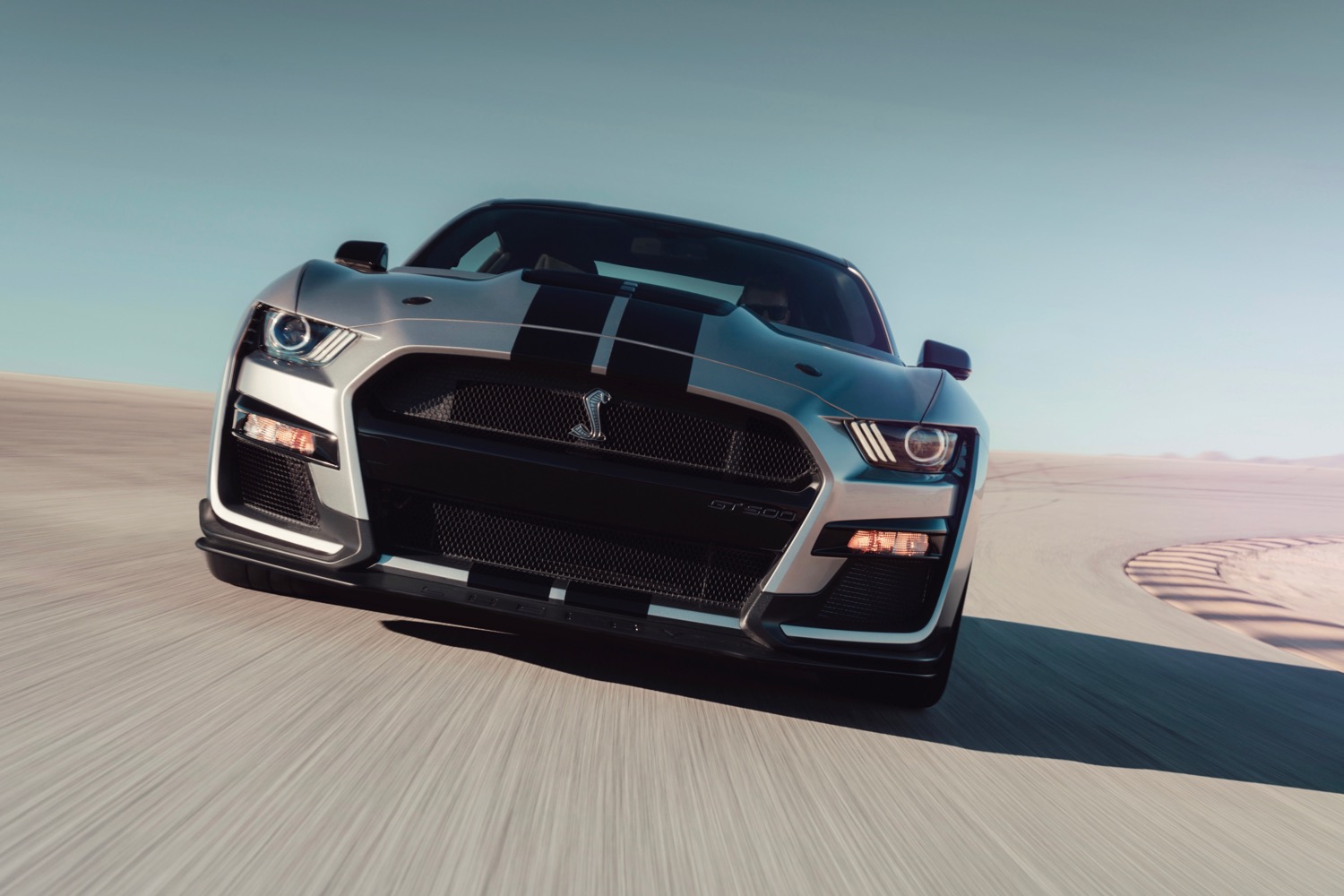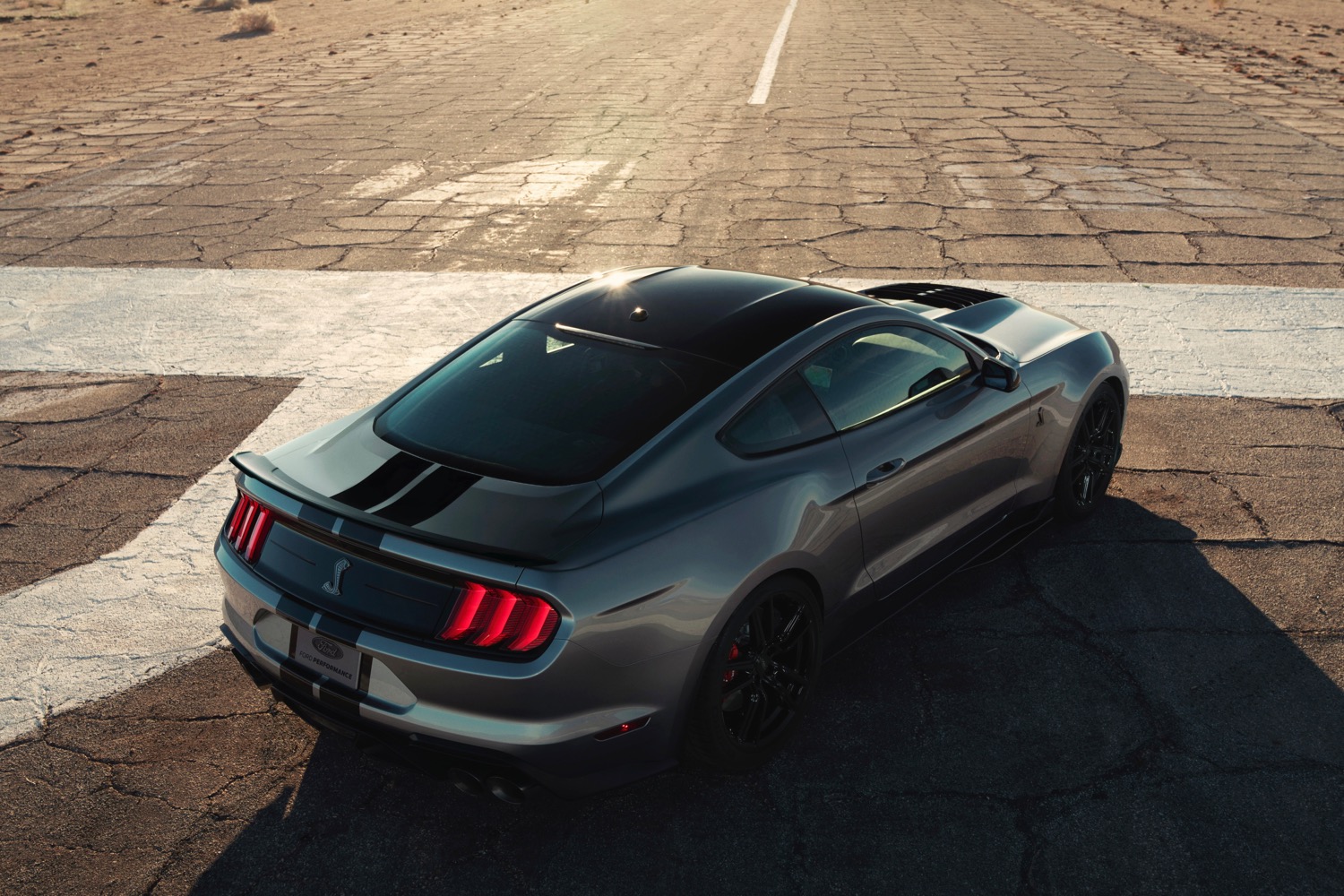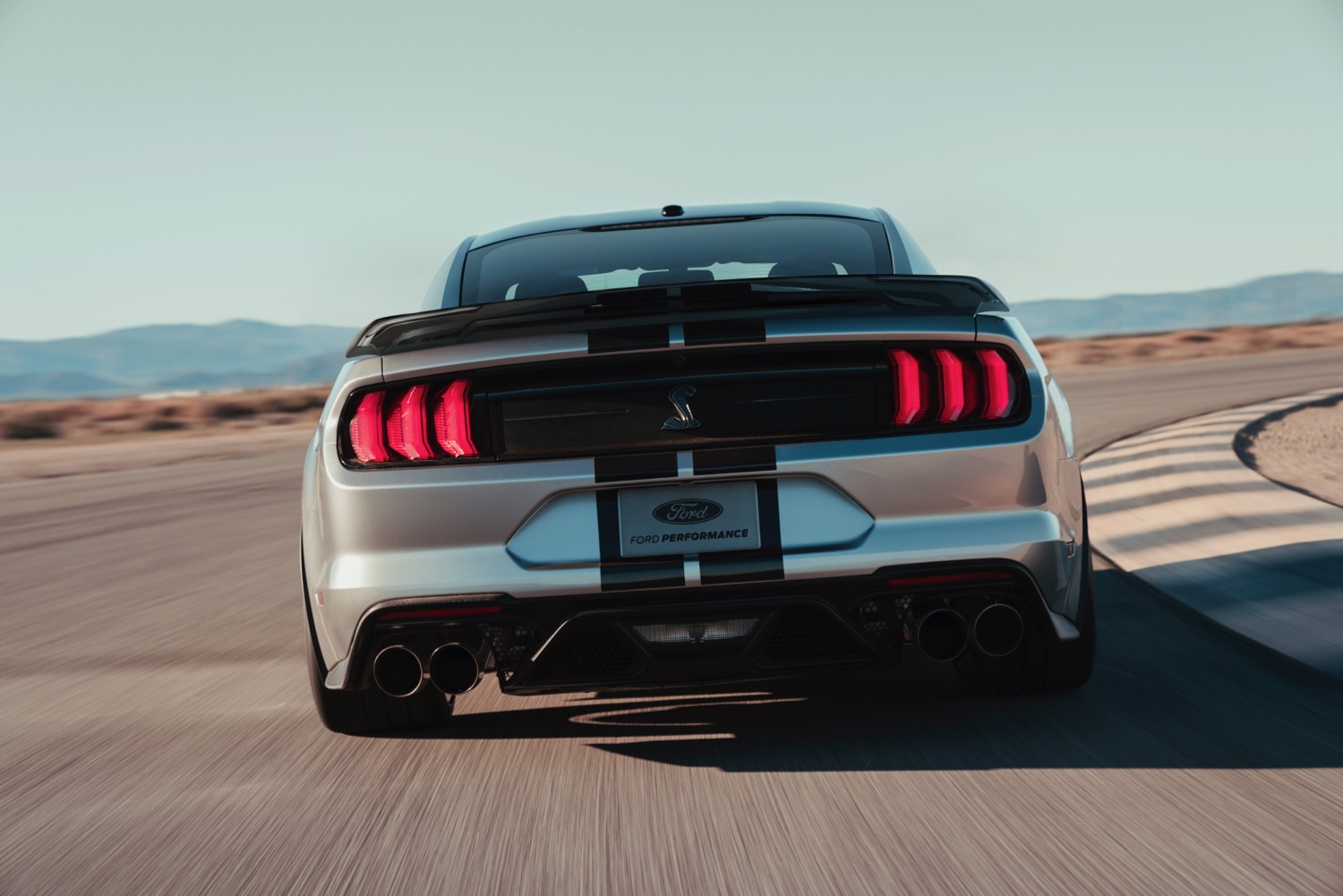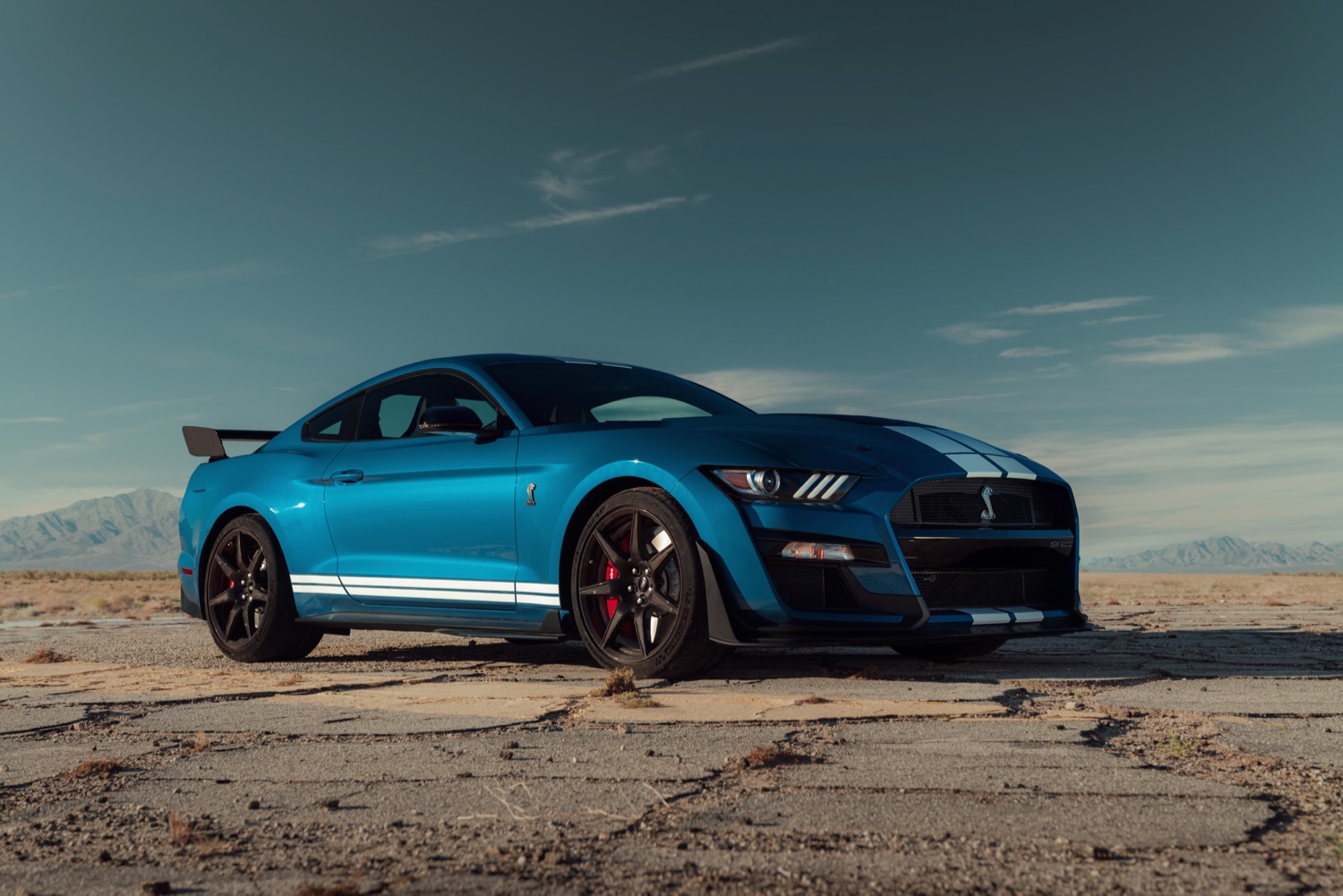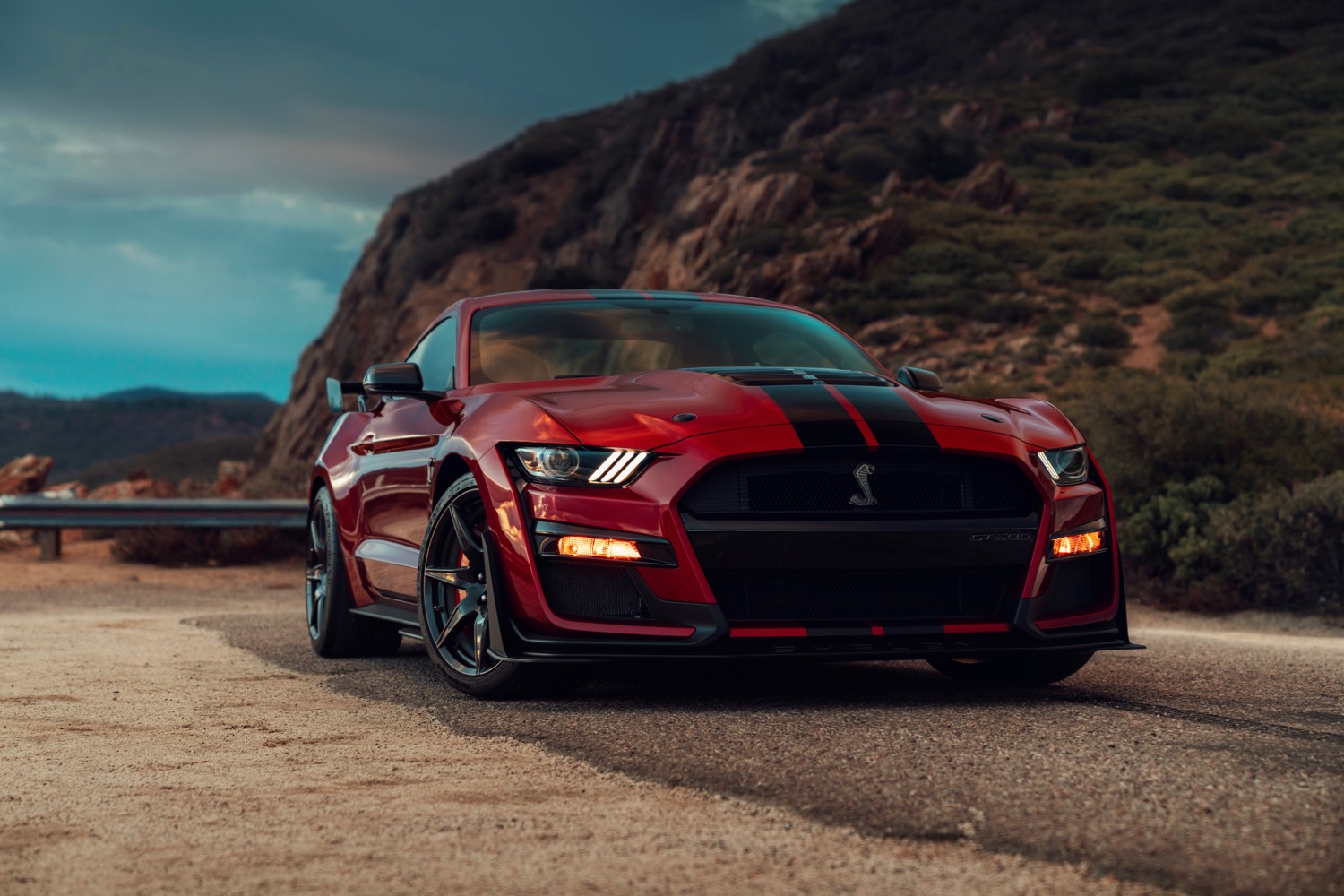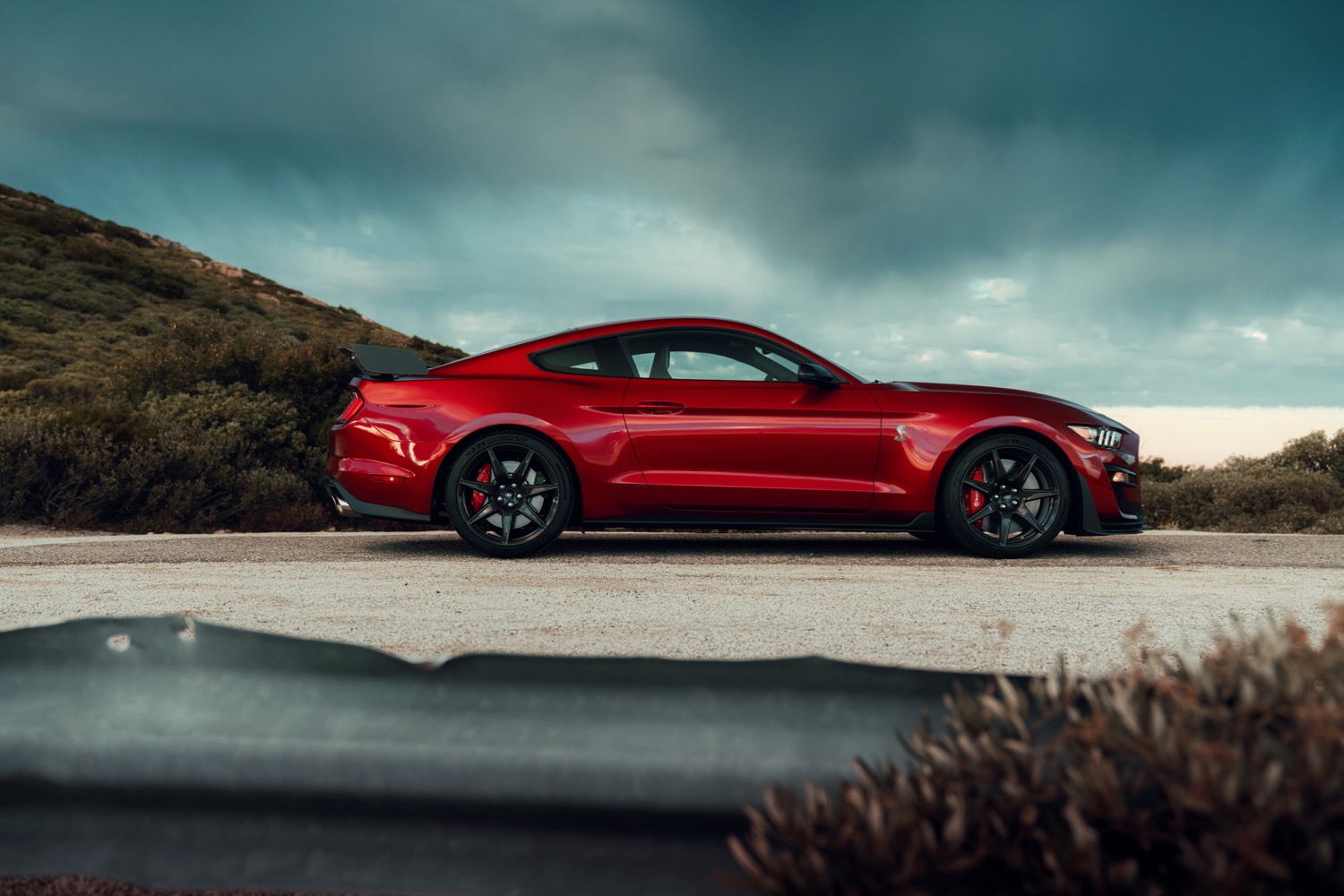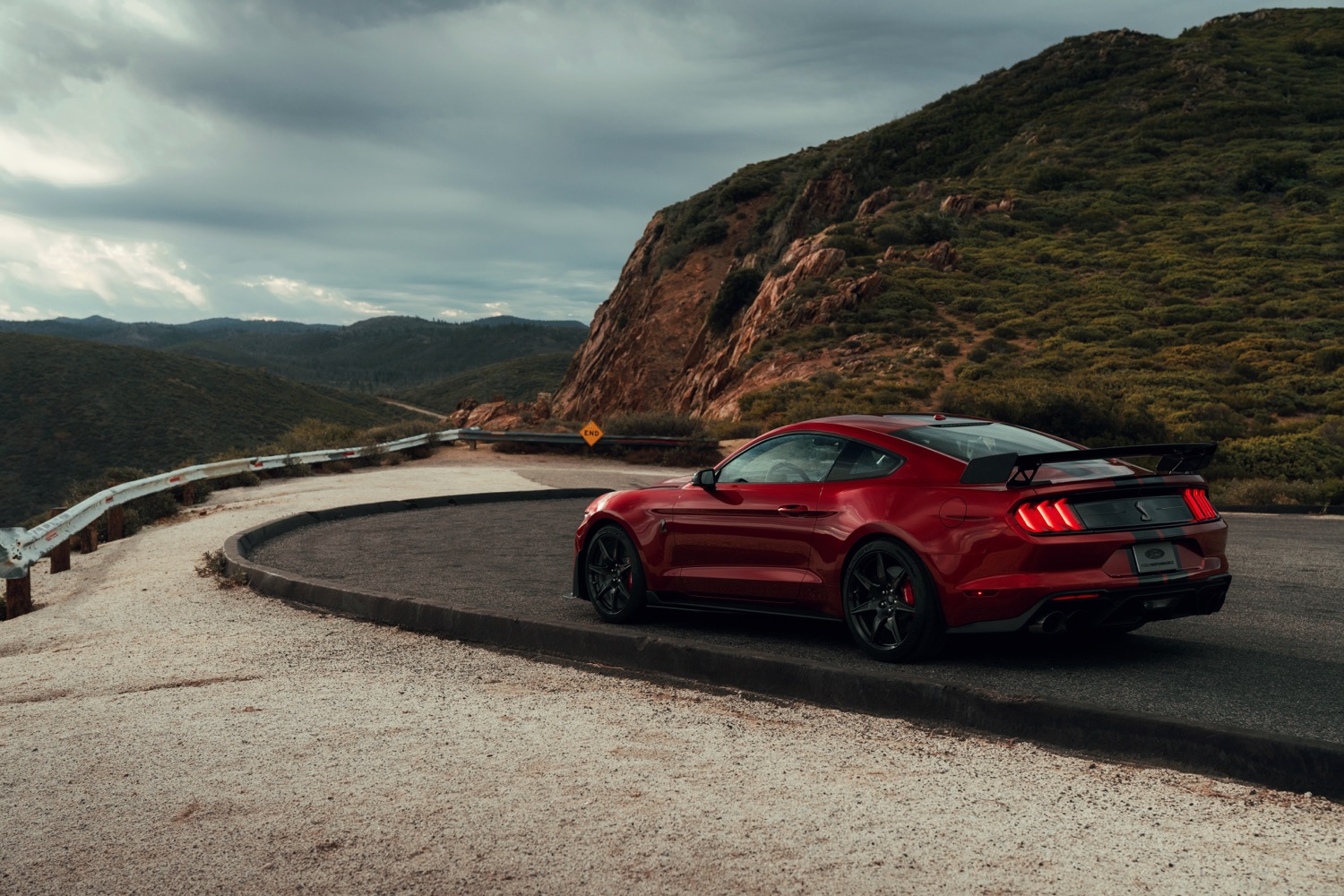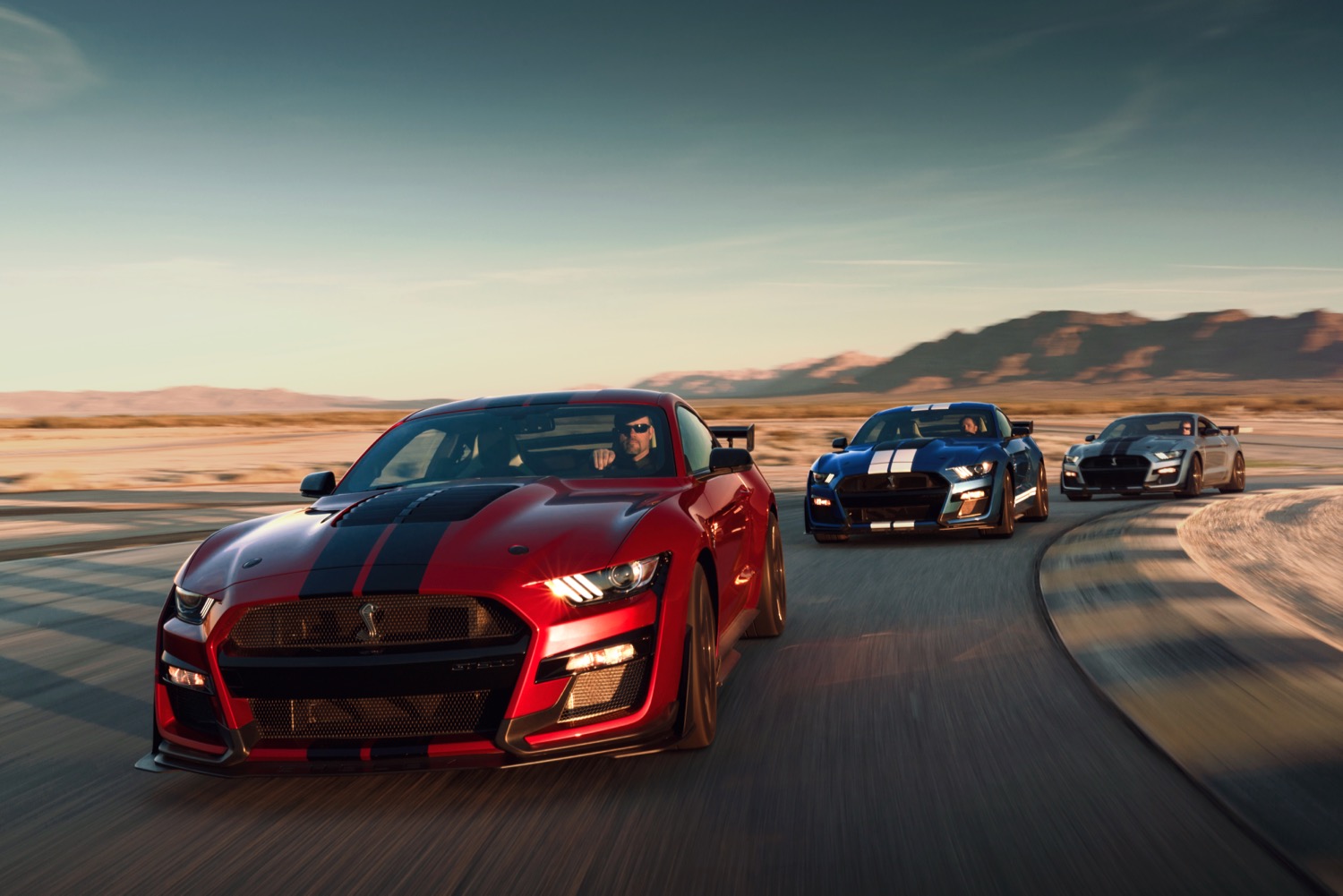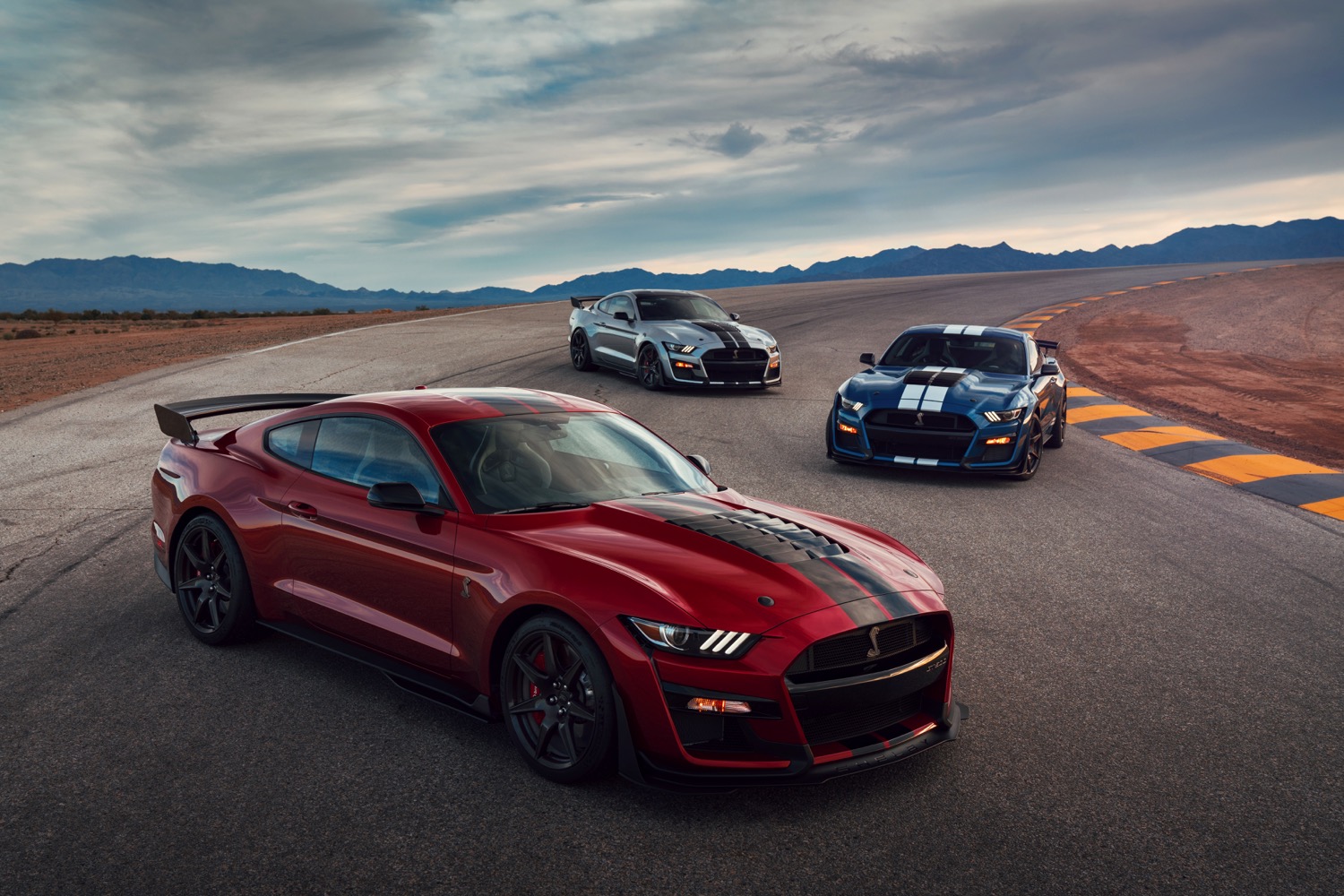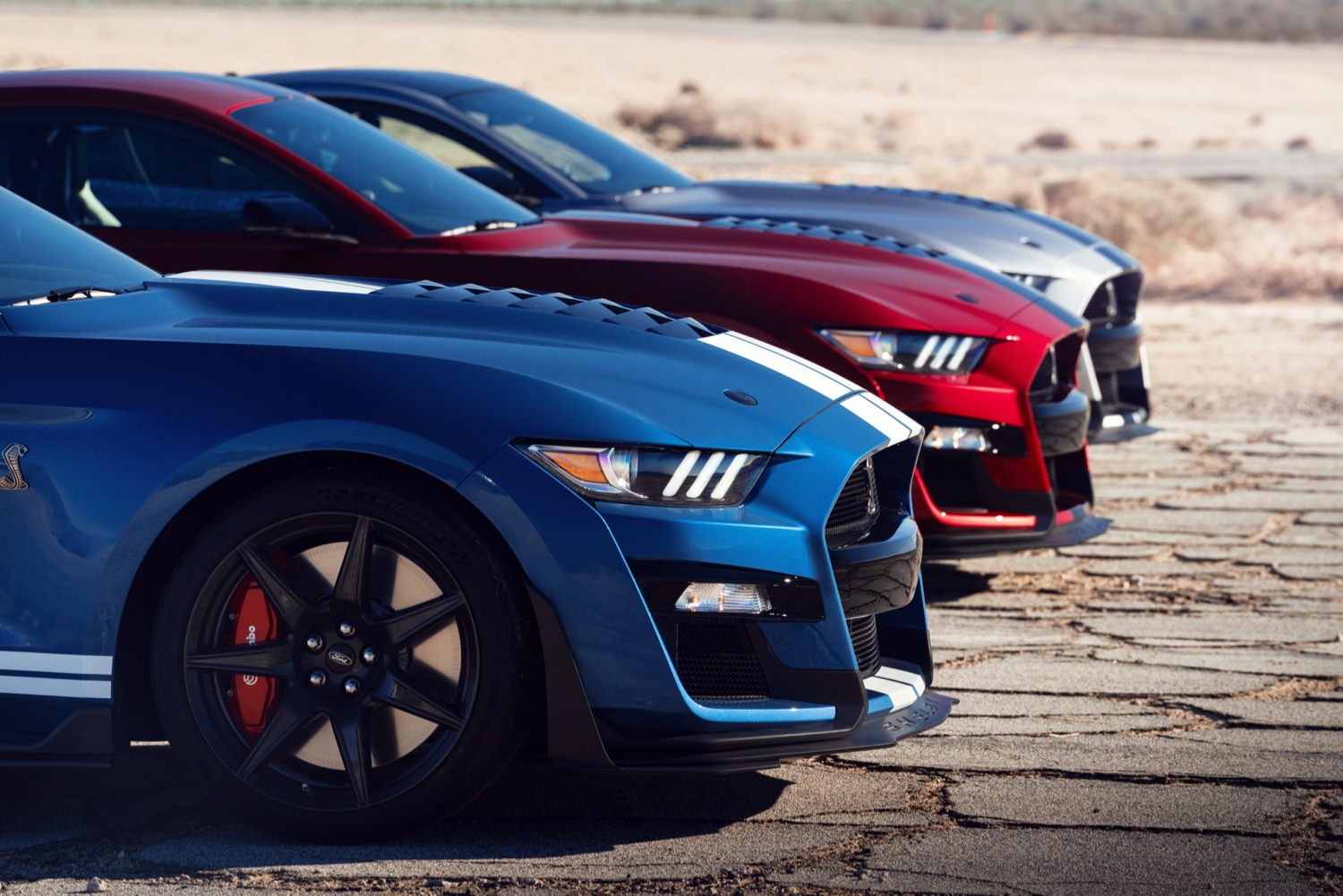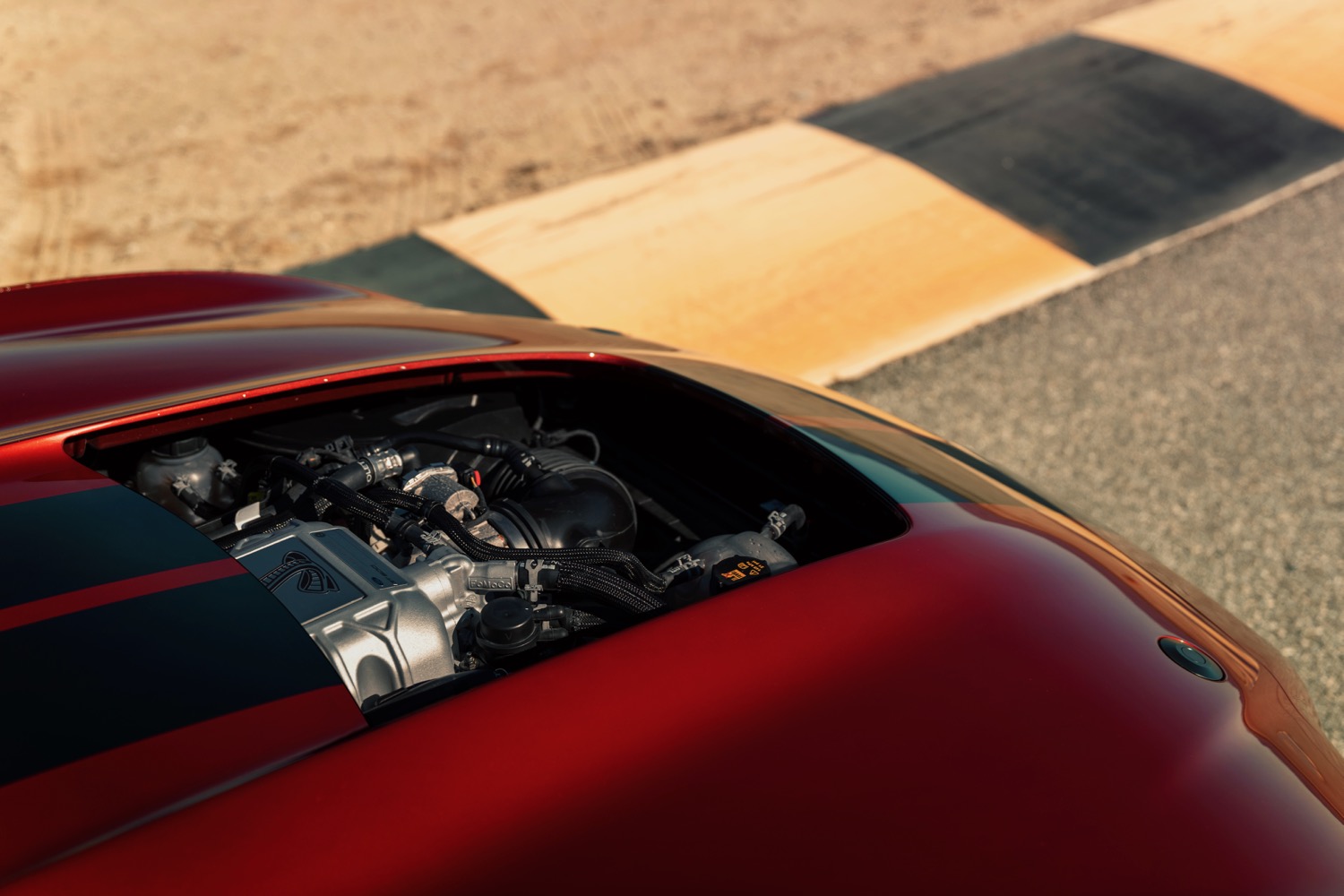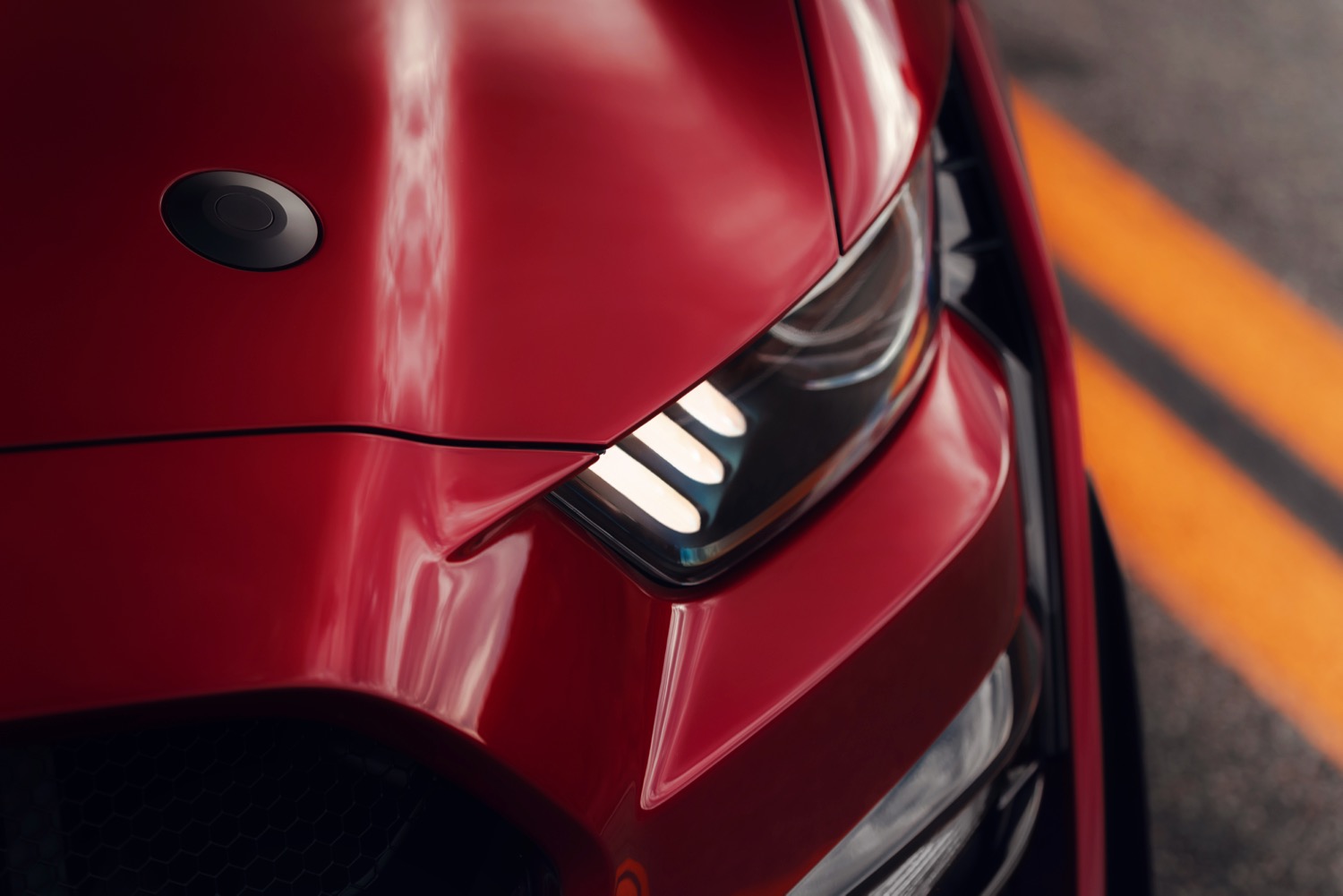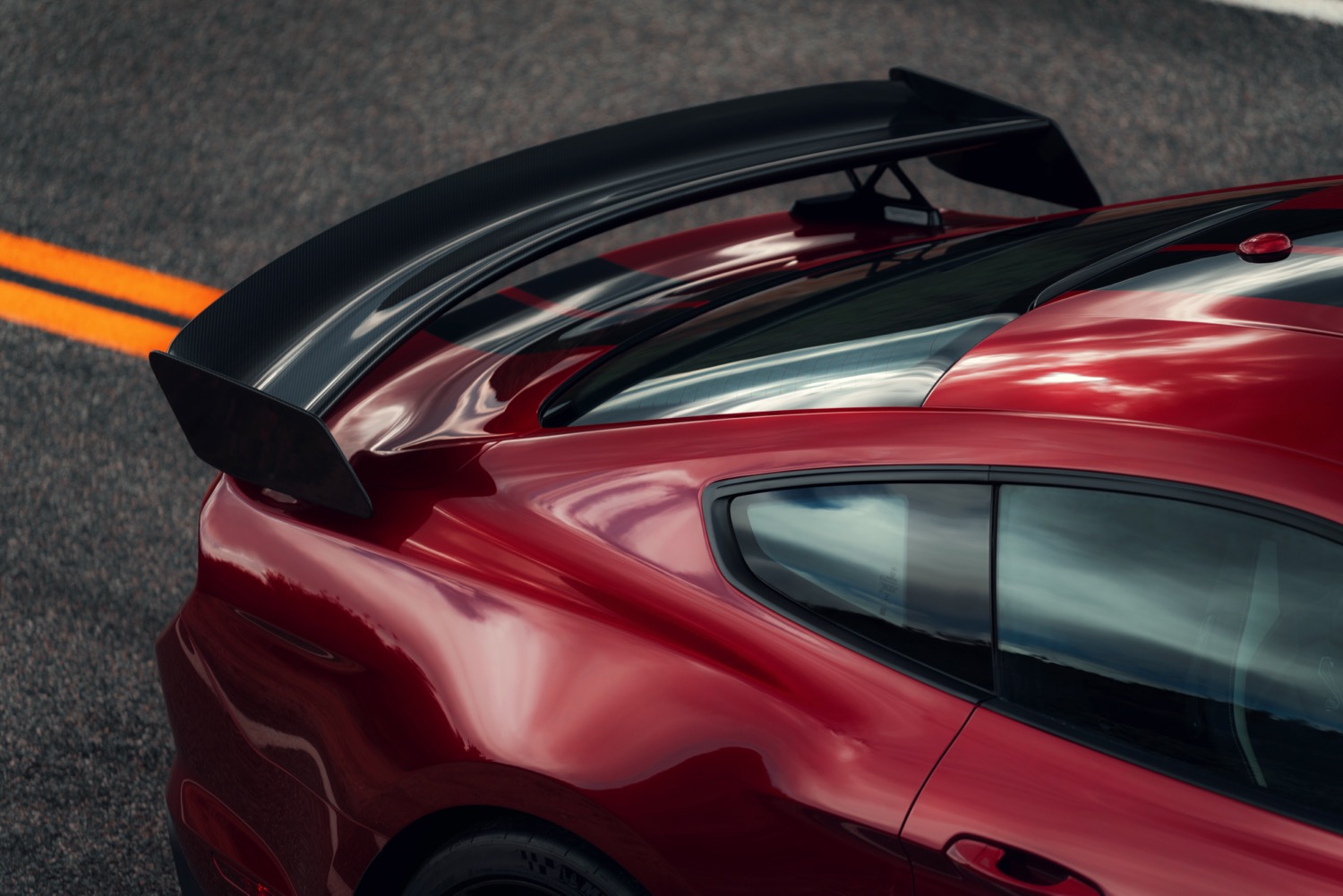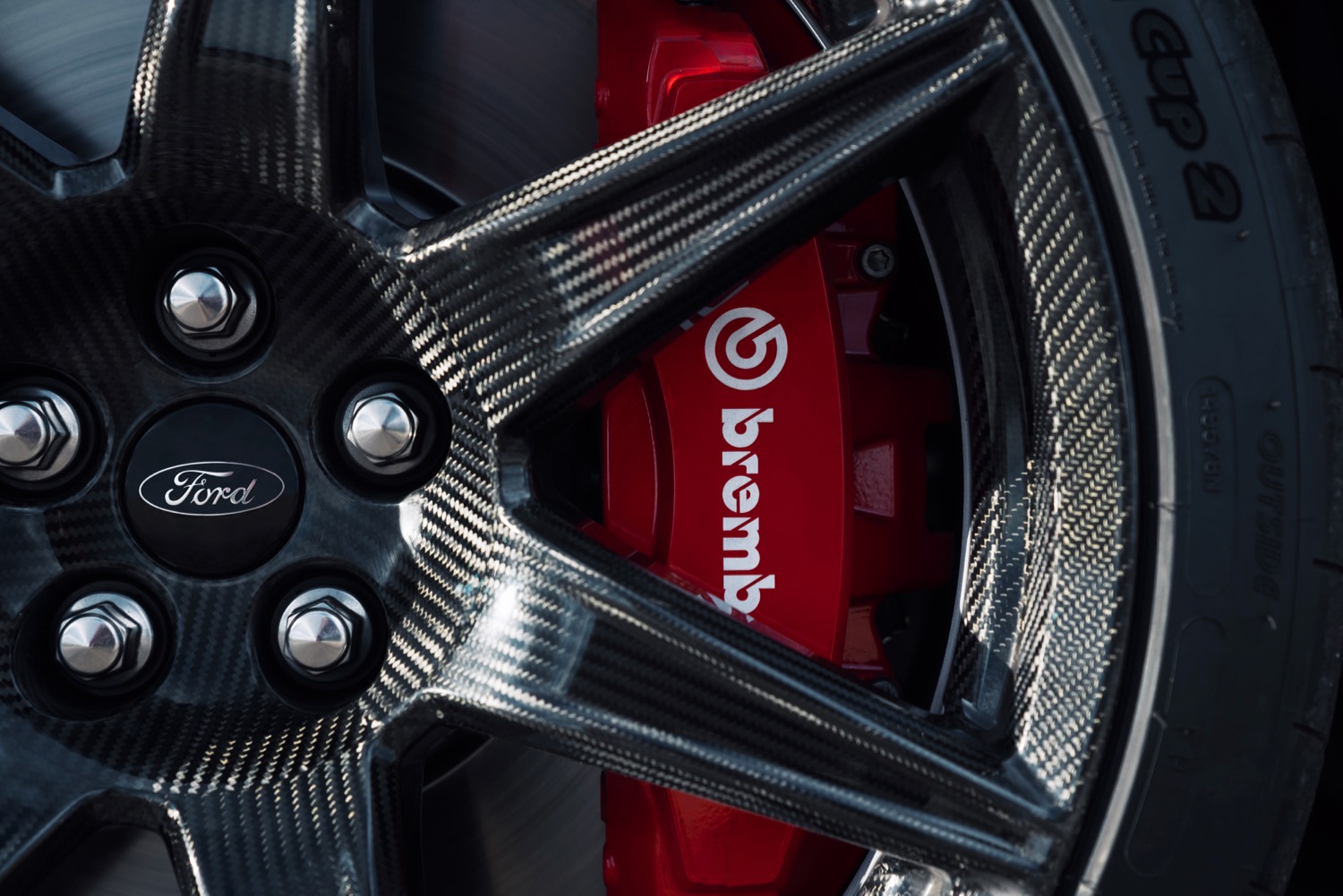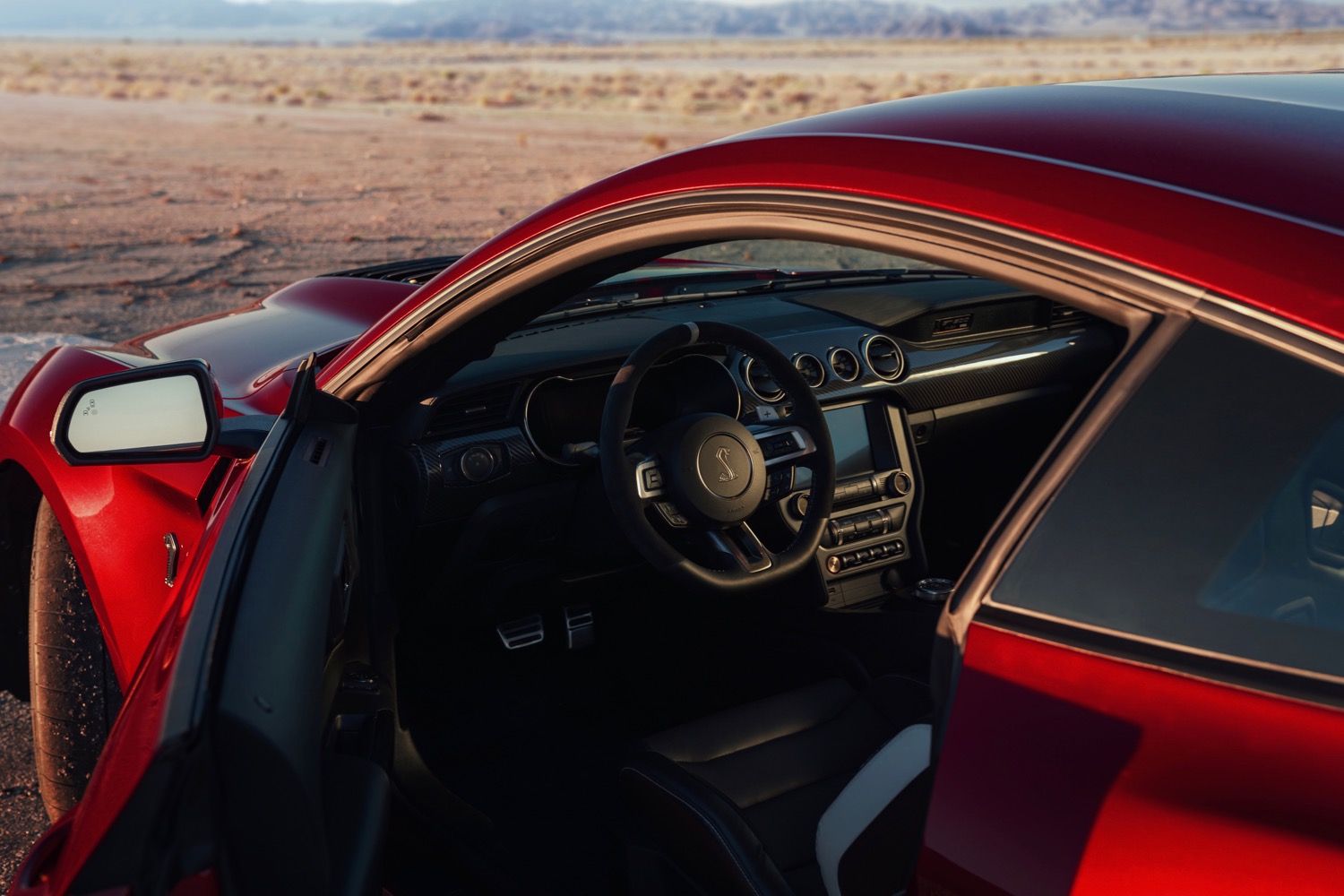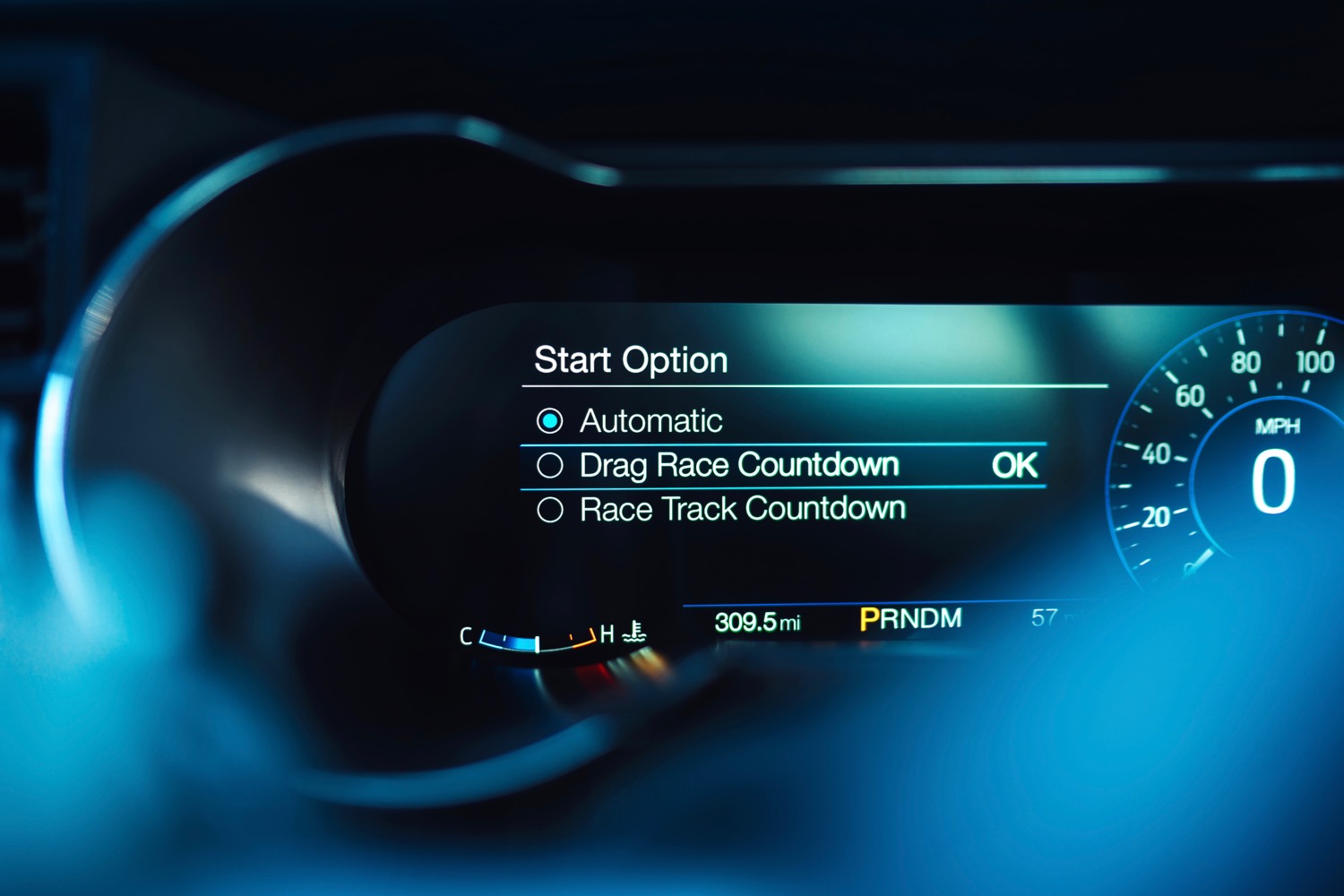Despite so much talk of electric cars and autonomous driving, you can still buy a 797-horsepower Dodge Challenger or a 650-hp Chevrolet Camaro. But the rival Ford Mustang has stayed out of the horsepower wars — until now. Unleashed at the 2019 Detroit Auto Show, and reviving one of the greatest names in muscle car history, the 2020 Ford Mustang Shelby GT500 roars into the muscle car arena with 760 hp and 625 pound-feet of torque between its fenders.
760 hp; that’s 380 hp per seat. It’s over six times the output of the Fiesta, Ford’s entry-level model. The latest Shelby GT500 is the most powerful production Mustang ever, and the most powerful street-legal car it has ever produced. It even beats the ultra-exclusive, Le Mans-winning GT.
The cavalry is generated by a 5.2-liter, all-aluminum V8 equipped with a massive supercharger. It’s an evolution of the engine found in the Shelby GT350 Mustang, and it’s bolted exclusively to a seven-speed dual-clutch transmission. Ford noted that the dual-clutch gearbox shifts much quicker than a manual, at under 100 milliseconds per gear change. In other words: you’re out of luck if you want a stick.
Drivers won’t have the satisfaction of shifting themselves, but at least they’ll get places quickly. The GT500 screams to 60 mph in about 3.5 seconds, and it runs the quarter mile in under 11 seconds. That should put the Ford within striking distance of the 797-hp Challenger Hellcat Redeye Widebody, which does zero to 60 mph in 3.4 seconds and runs the quarter mile in 10.8 seconds at 131 mph, according to Dodge. We can’t wait to see the two side-by-side on the drag strip.
But while the Challenger is an old-school muscle car that’s really only good in a straight line, Ford claims the GT500 will also be able to turn corners with aplomb. It features revised rear suspension geometry, a new electric power steering unit, and an upgraded version of the MagneRide adjustable-suspension system found in lesser Mustangs. The GT500 also sports bigger Brembo brakes than its GT350 sibling, and improved cooling courtesy of a more aggressive-looking front end, and 20.0-inch wheels housed in bulging fenders.
Buyers can also add a Handling Package with adjustable strut top mounts, and a bigger rear spoiler, or a Carbon Fiber Track Package with carbon fiber wheels with 0.5-inch-wider rear wheels, and an adjustable carbon fiber rear-wing spoiler from the Mustang GT4 race car. Ford also removes the rear seats to save weight. However, the options list also includes some creature comforts, like an 8.0-inch touchscreen, 12.0-inch driver information display, and 12-speaker B&O Play audio system.
Pricing will be announced closer to the car’s launch, but expect the Shelby GT500 to command a significant premium over the GT350, which starts around $60,000.
Updated June 19, 2019: Added full technical specifications.
Editors' Recommendations
- 2020 Chevrolet Camaro vs. 2020 Ford Mustang
- The 2020 Ford Shelby Mustang GT350R remains hilariously hardcore
- This 600-horsepower 2019 Shelby GT-S Mustang is the ultimate rental car


